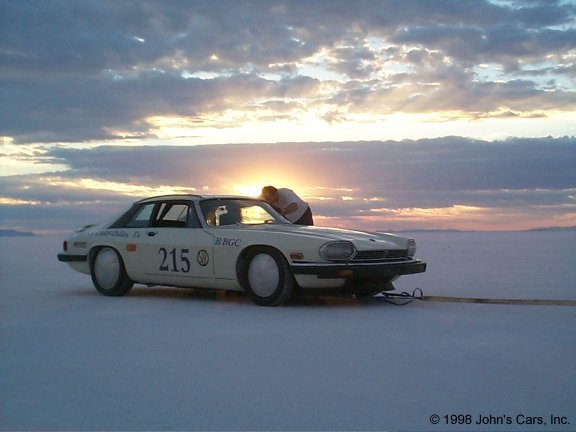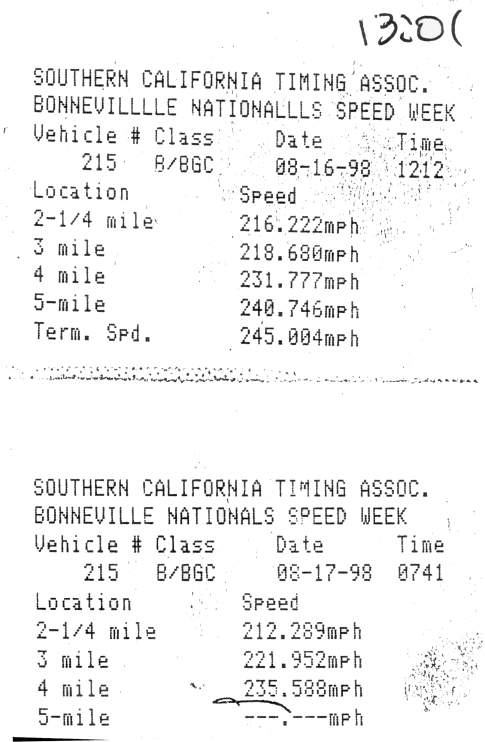| Home | Jaguar Conversions | Jaguar Parts | Triumph TR7 | Datsun ZCar | News | Specials | |||||||||||||||
| Fastest XJS on Earth | John's Cars, Inc. | |||
| A customer used a John's Cars XJS conversion kit and a bit of additional engineering to take his XJS to speeds in excess of 200mph. In 1996, he broke the record but wasn't able to back it up as the engine blew on the return run. However, he returned in September 1998 and established a new world record for his class, going 235 mph. This year John decided to go and watch (and help if needed). This page has lots of graphics, so it will take awhile to load. | |||
Drivetrain |
|||
| The motor is a Chevy 388 Small Block with dual
turbo charged with a liquid inter-cooler. It was tuned to generate about 950hp on
the flats (although up to 1400hp is possible). The transmission is 4L80E with an
extra fifth gear. Other modification include a roll cage, digital dash and the sport
Jaguar suspension. Other than that, everything is OEM and the
car is completely street legal! Even the A/C works! Remember, this drivetrain was installed using a John's Cars XJS Conversion Kit!
|
|||
| Getting Ready | |||
| Entering the flats.... this was the 50th
anniversary of speed runs.
|
|||
| Lining up to make a run just before sunrise...
|
|||
 |
|||
| Getting Set | |||
| We're ready to...
|
|||
GO!!!
|
|||
| Impounded after the record run...
|
|||
| Speeding Ticket | |||
 |
|||
| Other Stuff John Saw | |||
|
|||
Salt Flat Geology and History This was taken from the sign at the entrance of the salt flats...
|
|
|
|||||||||||||||||
| Contact John's Cars | |||||||||||||||||
|
|||||||||||||||||
© 2004 John's Cars, Inc. All Rights Reserved. Prices subject to change without notice. |
|||||||||||||||||